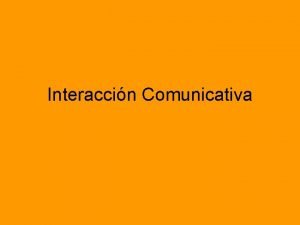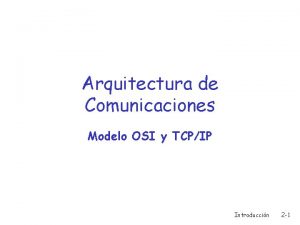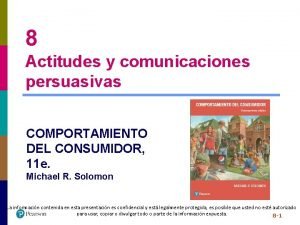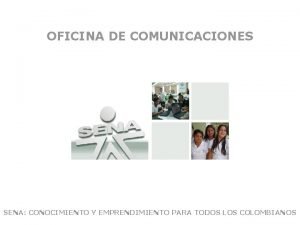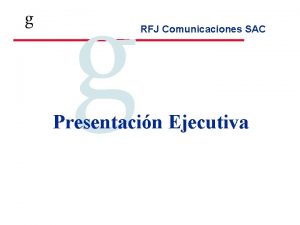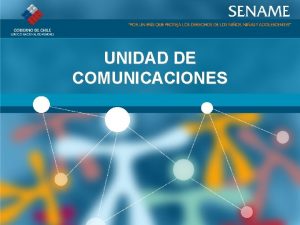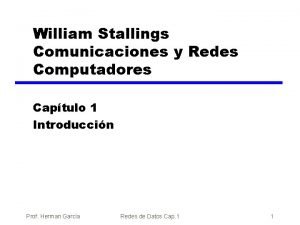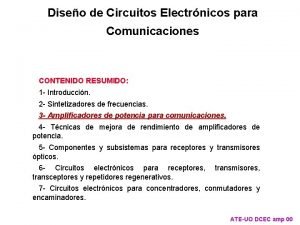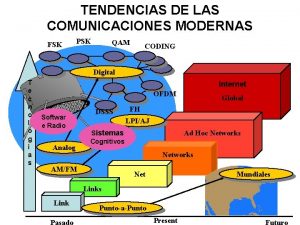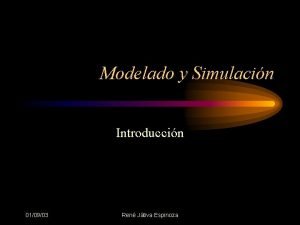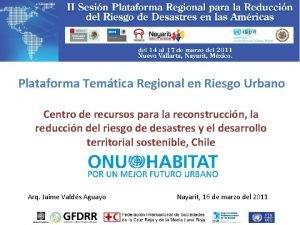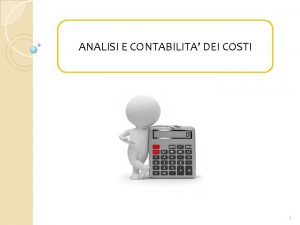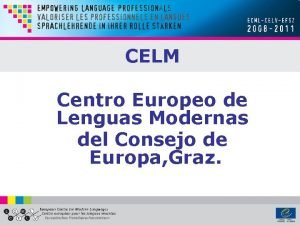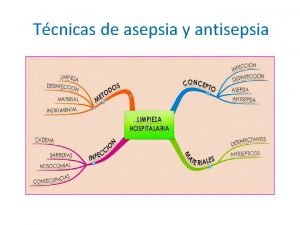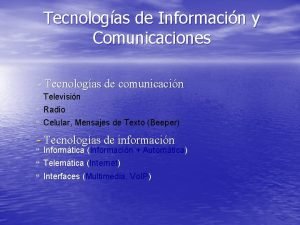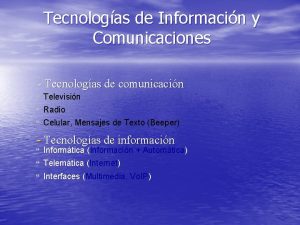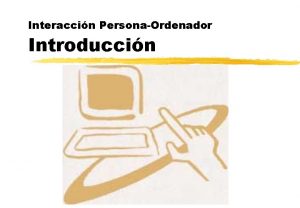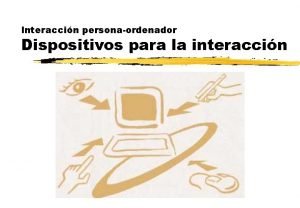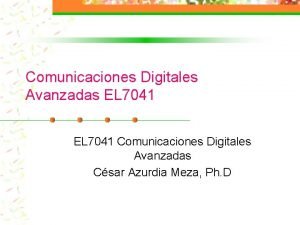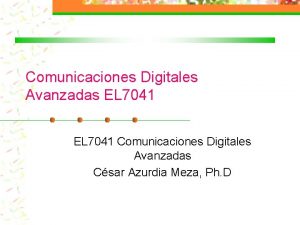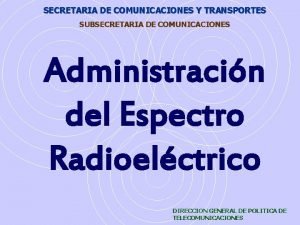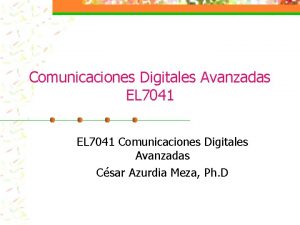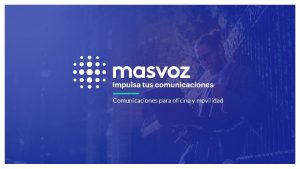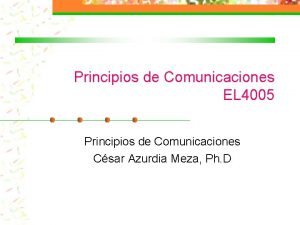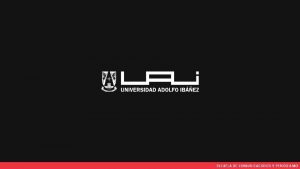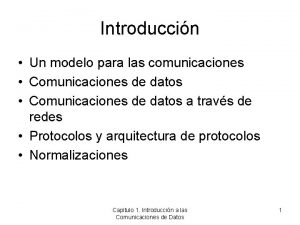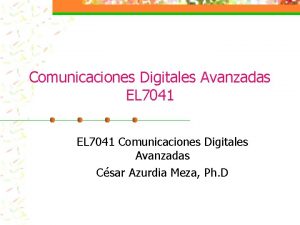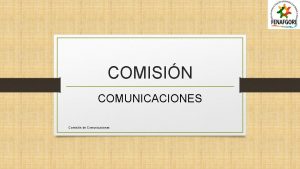CENTRO DE TECNOLOGAS DE INTERACCIN VISUAL Y COMUNICACIONES


















- Slides: 18

CENTRO DE TECNOLOGÍAS DE INTERACCIÓN VISUAL Y COMUNICACIONES VISUAL INTERACTION AND COMMUNICATIONS TECHNOLOGIES Carlos Lamsfus. ISWDS 2005 Galway, November 7 th 2005

Re-use and alignment of ontologies: the art-E-fact ontology as an extension of the CIDOC CRM Carlos Lamsfus, María Teresa Linaza and Tim Smithers Carlos Lamsfus. ISWDS 2005 Galway, November 7 th 2005

Introduction: The Context Information exchange Knowledge sharing Internet, Ontologies Different systems (technical) Different culture /methodology/ languages (semantic) Pursue a culture of re-use of already exiting work Contribute to standards Interoperability Standards

Presentation Overview Introduction and Objectives Previous work The art-E-fact project and ontology The CIDOC CRM ontology art-E-fact vs. CIDOC CRM -> Differences Alignment of the art-E-fact and CIDOC CRM ontologies Conclusions

Previous work: the art-E-fact project (IST 2001 -37924) Create a generic platform for Interactive Storytelling in Mixed Reality that allows artists to create artistic expressions in an original way within a cultural context between the virtual and the physical reality Develop a generic platform for interactive storytelling Facilitate access to a knowledge database of cultural and artistic material Develop an Authoring-Tool (from scratch) that allows artists to create interactive stories (content, virtual characters, background and interaction metaphors) Access to the content databases

Previous work: the art-E-fact ontology The art-E-fact ontology: For authors to get a general idea of the content Reflect relations among concepts that are not shown in the database The Content Browser: Efficient and effective access and navigation through the concepts To get to know and discover what there is available Access to the content database

Previous work: the CIDOC CRM(I/II) ONTOLOGY A B

Previous work: the CIDOC CRM (II/II) Serve as common language for domain IT experts and developers Support the implementation of automatic data transformation algorithms from local to global structures without loss of meaning Exchange and integration of heterogeneous scientific documentation of museum collections: Scientific documentation -> information described by CIDOC CRM as sufficient for academic research Museum collections -> collections, sites, monuments, etc.

Presentation Overview Introduction and Objectives Previous work The art-E-fact project and ontology The CIDOC CRM ontology art-E-fact vs. CIDOC CRM -> Differences Alignment of the art-E-fact and CIDOC CRM ontologies Conclusions

art-E-fact vs. CIDOC CRM -> differences Similarities Both ontologies reflect a (serious) commitment to the expression of common concepts underlying data structures used by their users Differences The art-E-fact ontology was motivated by the need to describe added-value content for the creation of stories The CIDOC CRM ontology focuses on documentation processes among cultural institutions, motivated by the need to share information

art-E-fact vs. CIDOC CRM -> differences CIDOC CRM art-E-fact SCOPE: all the information required for the scientific documentation of cultural heritage collections -> information exchange SCOPE: the ontology is not devoted to documentation, but to content description and comprehension -> “semantic index” CIDOC CRM focuses on curated knowledge of museums art-E-fact focuses on content generation by artists The CIDOC CRM is intended to cover contextual information, e. g. historical, geographical and theoretical background The art-E-fact ontology takes into account different levels of knowledge in order to provide rich content to build interactive stories

Presentation Overview Introduction and Objectives Previous work The art-E-fact project and ontology The CIDOC CRM ontology art-E-fact vs. CIDOC CRM -> Differences Alignment of the art-E-fact and CIDOC CRM ontologies Conclusions

Alignment of the art-E-fact and CIDOC CRM ontologies (I/III) Merging vs. Alignment (incorporation) of ontologies Questions: Does the art-E-fact ontology need to be a CRM extension? What would we like to do with the extended version? What do we want to support people doing? Alignment: semi-automated rule-based process Tool -> to be selected yet Ontology language: OWL DL Alignment language: RWL (http: //www. wsmo. org/wsml/wrl. html#wsml)

Alignment of the art-E-fact and CIDOC CRM ontologies (II/III) CIDOC CRM art-E-fact Understand how the art-E-fact ontology is related to the CRM (knowledge levels) Identify CRM’s part we want to map to art-E-fact Try to find a CRM subgroup and match it (semantically) as identities

Alignment of the art-E-fact and CIDOC CRM ontologies (III/III) WRL (Web-based Rule Language) Derived from the ontology component WSML Rule-based ontology language (OWL: description logic language) “Translate” the art-E-fact ontology into OWL DL Using WRL identify “common” concepts

Presentation Overview Introduction and Objectives Previous work The art-E-fact project and ontology The CIDOC CRM ontology art-E-fact vs. CIDOC CRM -> Differences Alignment of the art-E-fact and CIDOC CRM ontologies Conclusions

Conclusions Technology tending to standards -> enable information exchange The art-E-fact and CIDOC CRM ontologies Definition, comparison, differences -> conclusions Research on semantic-based rule languages Contribute in general to the standardization of processes as well as to standards Concrete example of the application of the mapping process

CENTRO DE TECNOLOGÍAS DE INTERACCIÓN VISUAL Y COMUNICACIONES VISUAL INTERACTION AND COMMUNICATIONS TECHNOLOGIES Carlos Lamsfus. ISWDS 2005 Galway, November 7 th 2005
 Interaccin
Interaccin Centro zonal hipodromo
Centro zonal hipodromo Arquitectura de comunicaciones
Arquitectura de comunicaciones Dispositivos de comunicacion
Dispositivos de comunicacion Cable coaxial historia
Cable coaxial historia Modelo de atributos múltiples
Modelo de atributos múltiples Oficina de comunicaciones sena
Oficina de comunicaciones sena Rfj comunicaciones
Rfj comunicaciones Unidades y objetivos
Unidades y objetivos Stallings william comunicaciones y redes de computadores
Stallings william comunicaciones y redes de computadores Comunicaciones
Comunicaciones Comunicaciones modernas
Comunicaciones modernas Sistema de comunicaciones
Sistema de comunicaciones Bahasa pemrograman konvensional
Bahasa pemrograman konvensional Centro de recursos
Centro de recursos Centri di costo
Centri di costo Centro europeo de idiomas
Centro europeo de idiomas Centro diurno coderino
Centro diurno coderino Principios de asepcia
Principios de asepcia
